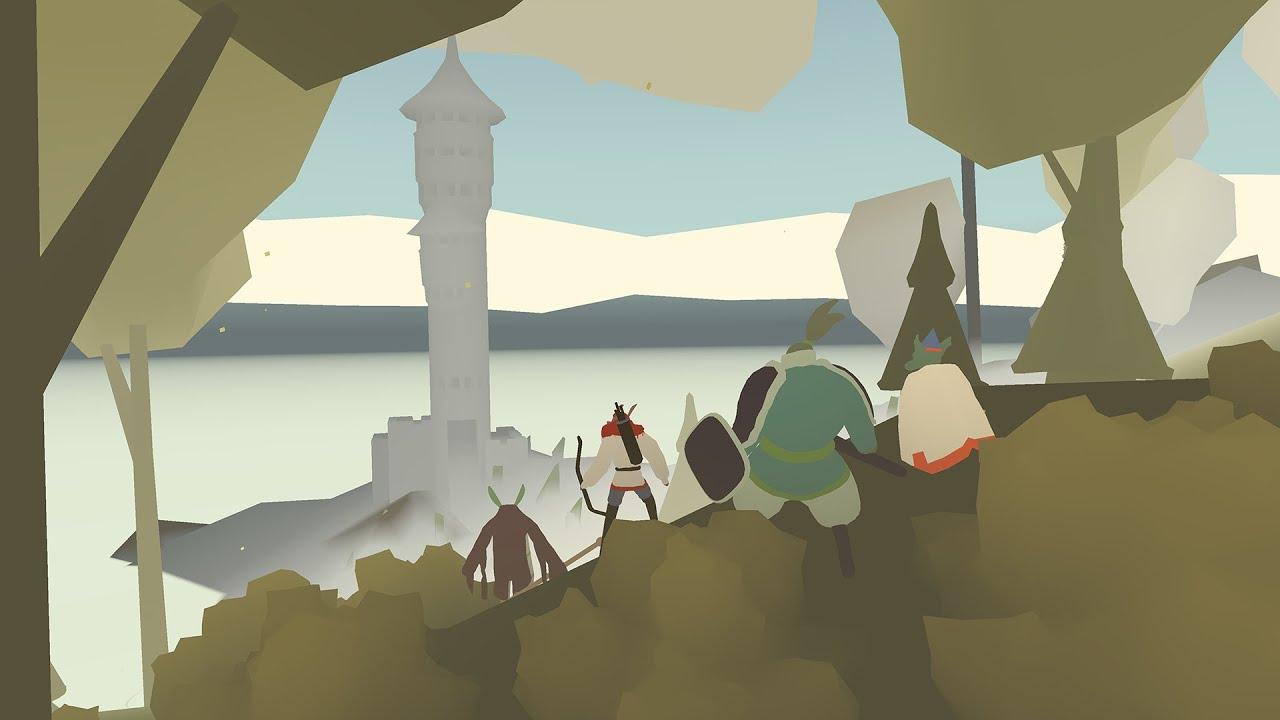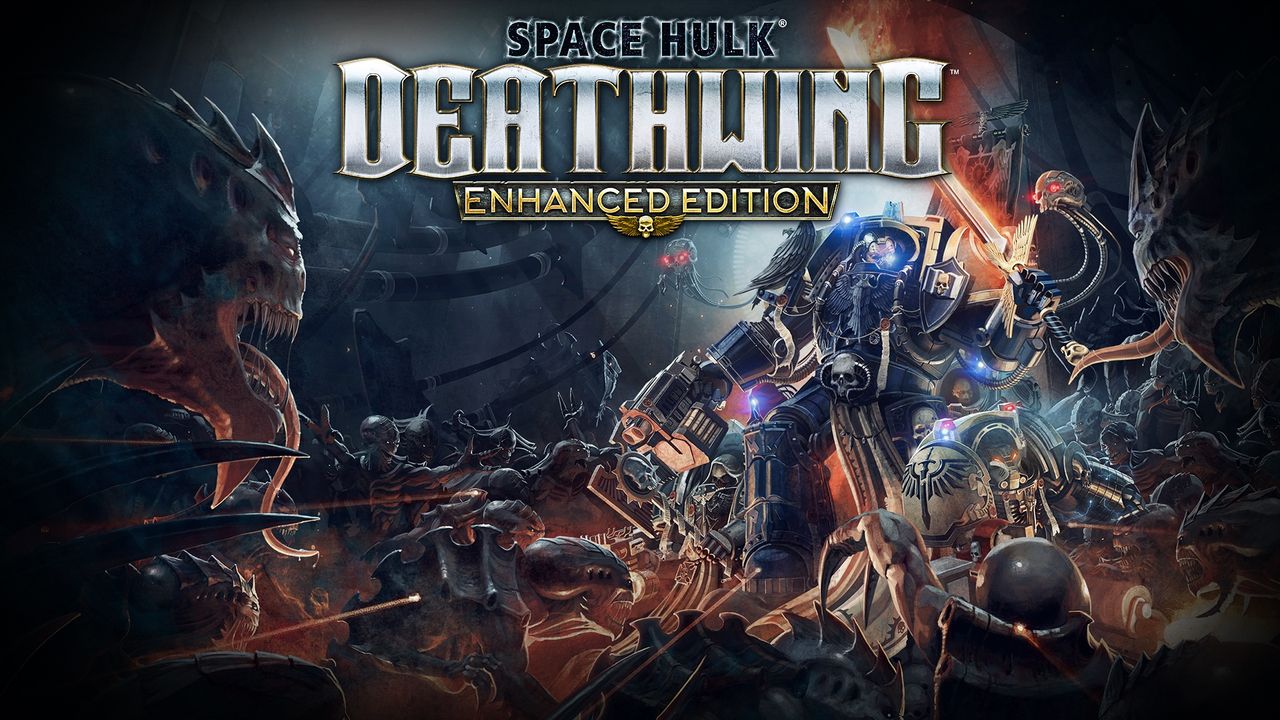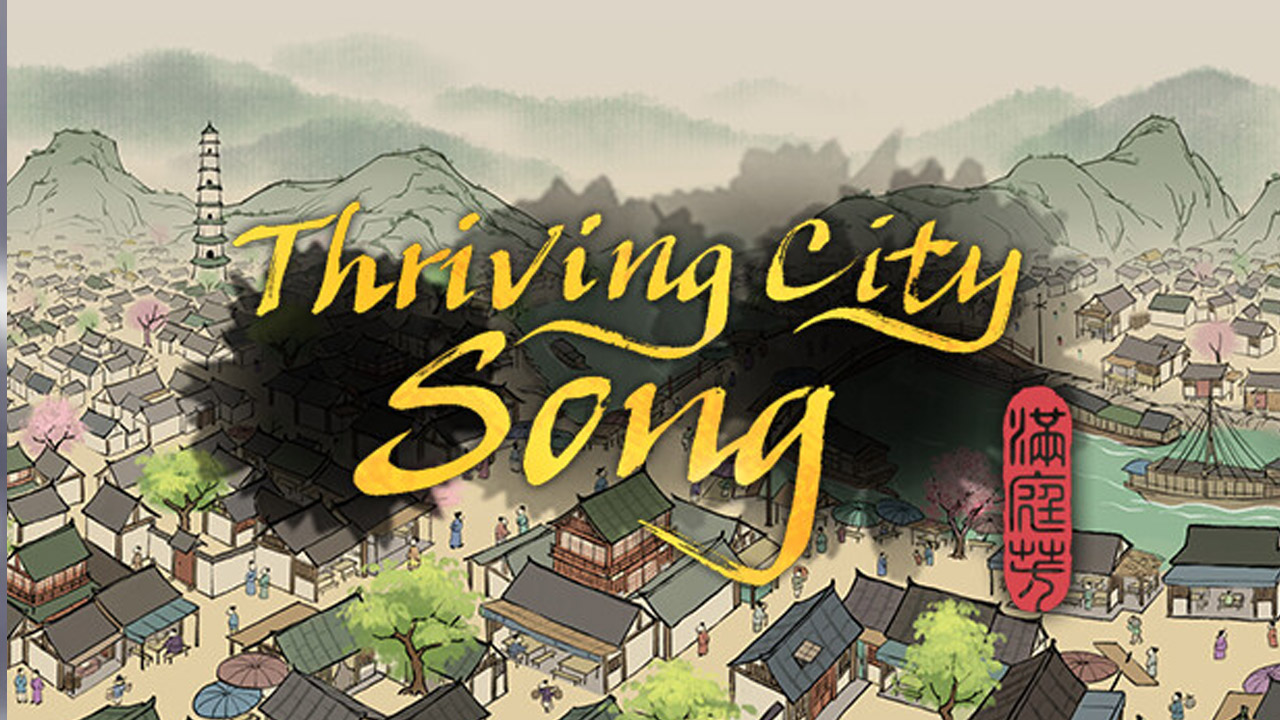A look at all the classes in the game: what they can do, what they do well, and where they’re lacking.
Preface
This guide will examine all the breeds’ skills and their synergies. Naturally, this document is going to be full of my opinions, so feel free to disregard what I think and enjoy playing the game however you want. I will acknowledge that every breed in the game has its niche, and it’s certainly possible to play through the game without hyper-analyzing everything.
I don’t want to offer redundant information, so in the interest of keeping it shorter and more focused on the “why” rather than the “what”, I will link you to the great Tenderfoot Tactics wiki to consult alongside this guide for details about the breed unlock requirements and specifics about their skills. Each breed section in this guide will link to the skill section of its respective page on the wiki.
Because I enjoy placing things in tiers, I’ll assign a grade to each breed based on how powerful I believe they are overall. These ratings don’t account for the intertwined nature of memory or affinity, and are more about how well that breed stands on its own and adapts to most of the challenges in this game. If you’re like me, you can create your own tier list here, where you’ll also find a summary of my rankings in the “community” section.
Categories
I tend to think of the breeds in terms of three distinct categories, which I’ll refer to throughout this guide. I came up with these myself, so they’re nothing official:
- Frontline: these are your close-range fighters. They tend to have naturally high health bonuses, and their skills are usually short-range. Having at least one frontline fighter in your team is recommended; if you have no one to soak damage, you’re likely to be overwhelmed unless you have some very clever tricks up your sleeve to protect your team (which may not always work if some enemies can counter those tricks). Frontline units may not necessarily pack the biggest punch, but they are able to take advantage of their close proximity to the enemy and tendency to get hit to deal a fair bit of damage, even outside their turns (via opportunist and thorn effects).
- Longrange: these are, well, your long-range fighters, of course. They tend to be the most frail in terms of base health, and mostly lack defensive or supportive skills. However, they make up for it by dealing some of the heaviest damage in the game. Keeping them a safe distance from enemies is paramount, and, through the very powerful lofty passive, keeping them on higher ground tends to let them unleash devastating attacks from relative safety.
- Support: these are your healers and, uh, generally supportive units. Don’t expect these breeds to soak or deal damage like the other categories, as that’s not their forté. It may be tempting to dismiss this category of breeds as unnecessary, given that the fights in this game tend to be fast-paced, with deterministic damage and mostly smaller battlefields. However, these breeds can really shine with proper investment and careful consideration of synergy. Healing is an obvious benefit that will keep your party alive (which is crucial in some of the longer fights), but other effects like poison, taunt, and even a bit of necromancy can be used to change the tides of battle.
Now, graphic design is most certainly not my passion, but I created a chart going over the breed dependencies and how I would roughly place them in my made-up categories, with some breeds straddling the line between two categories (and the goblin, which is totally non-specialized):
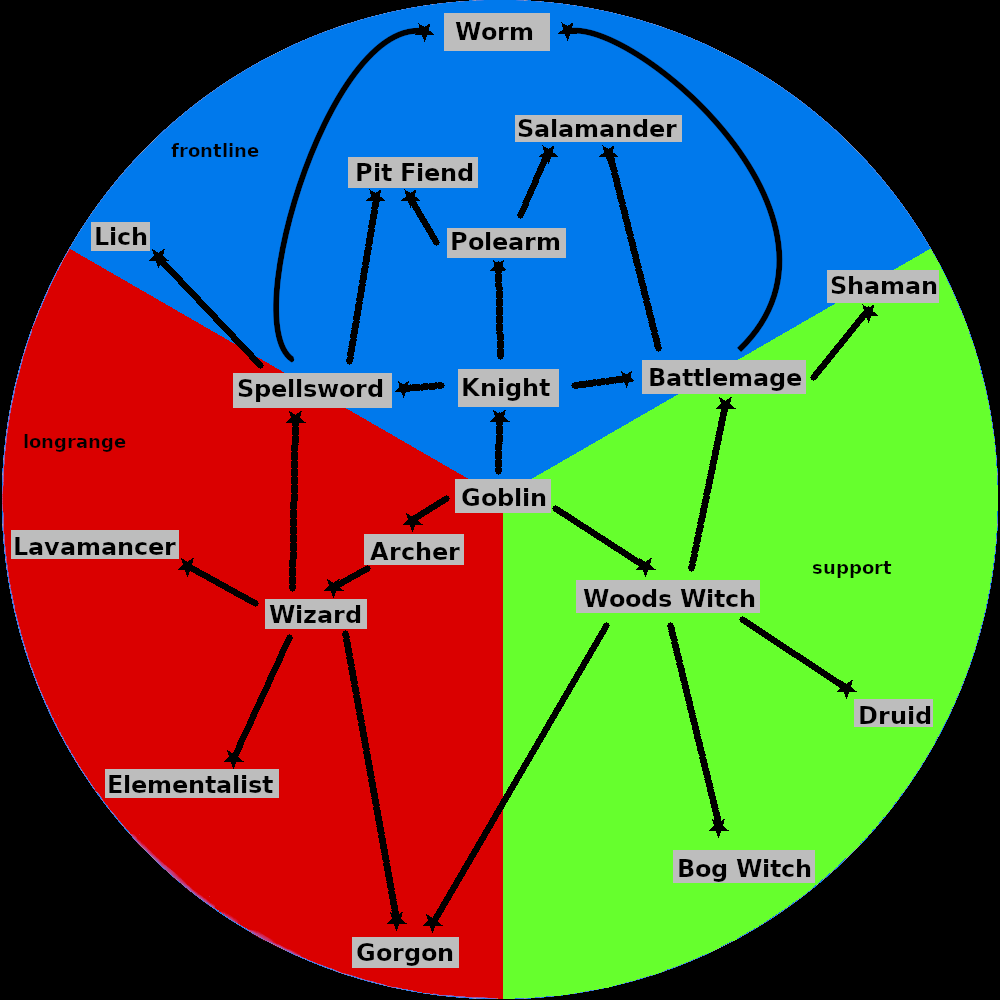
Goblin
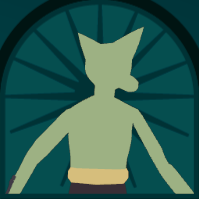
Skills
Attack
This is the only skill in the game that randomly varies from unit to unit. The party you start with in the tutorial will introduce you to the three different styles, and while they all have their tactical advantages at the start of the game (since you’re all basic goblins and have little else in the way of ranged attacks), they are rather imbalanced. The melee attack has the most damage potential, maxing at base 42 power, while the slingshot and shortbow can deal as little as 30 damage.
At first, this imbalance seems inconsequential, as there are so many better damaging skills out there. However, the passive ability opportunist performs whatever your goblin’s standard attack is (even after changing breeds), and opportunist is a fantastic skill that’s worth using on almost all frontline fighters. That difference of 12 damage can really add up over the course of the game. For that reason, I’d at least recommend finding random goblins that hit a 40+ with the standard melee attack to develop into frontline fighters.
First Aid
A single-target, short-range, but also quite powerful healing move. This move can self-target, which makes it fairly nice for frontline goblins in the early game, who may not be around to receive help from the rest of your party. Upgrading it is nice, but 55 base healing at the first tier is also pretty substantial early on.
Grenade
The first AoE attack in the game, although it is pretty short-range and not especially powerful. Grenade has good synergy with the archer’s lofty passive, especially starting at tier 2, where it lowers earth by 2. It also makes for a nice brush-clearing tool to get frontline fighters up closer to the enemy (before the knight’s oafish passive is available). The short range and 3×3 area-of-effect (AoE) on tier 3 is slightly awkward since it’s prone to friendly fire: the only way to avoid self-damage is by targeting 2 tiles straight out from you.
Song/Canticle
A multi-target 3×3 move centered on the caster. This move has more overall healing potential than first aid, but it is more situational. Can be nice for longer-ranged fighters who want to heal themselves and other long-range fighters. It also has plant affinity, so it can be used by other classes more easily than first aid.
Strangle/Garrote
A melee move that, when striking the back of a target, can deal the highest base damage in the game, at a whopping 110, tied only with the salamander’s sting? That’s a total game-changer being available from the beginning of the game. With at least tier 2, this move renders the standard melee attack basically unneeded (at least directly), even though it takes an extra skill point. Frontline goblins should fully upgrade this and use it liberally. Also note that any power bonuses from trinkets/buffs are doubled here, too, so once you collect those ultra-powerful trinkets, you’ll be able to one-shot quite a few types of enemies. It also has water affinity at tiers 2 and 3.
Anesthetize
A seemingly underwhelming skill at first glance, with little or no healing, just one target, and a pretty small max health increase (boosted by bonus power, though). However, the real sell here is the unnerve-resist effect, which can be a huge benefit for frontline fighters, who are likely dealing the most damage at this point in the game with opportunist and garrote (they’re also pretty frail, which makes this skill even more relevant). The usefulness of this skill drops off somewhat quickly as better support skills become available, but it is worth using early on. Also, the unnerve resistance of “numb” stacks with the knight’s headstrong passive, which can fast-track your knights up to the top of the turn queue every time they’re hit.
Opportunist
An incredible ability, simply put. Something you might realize early on about this game is that the AI is not terribly smart. One great illustration of that is in opportunist: enemies will walk right into opportunity attacks and obliterate themselves as they’re passing by you. They don’t seem to account for it at all, and enemies just love to move around. In case you’re unaware, you don’t need any attack skills equipped in order for opportunist to proc; it will automatically perform your standard goblin attack, even after changing breeds. For my frontline units, I rarely ever chose anything over this for my memory slot, up until the very late stages of the game. The ability to essentially take a free turn on an enemy’s turn is too powerful to pass up. Some particularly stupid enemy units will catch multiple opportunity attacks.
Memory
You won’t have a memory slot until unlocking another breed, which is at level 4. By level 5 in goblin, you’re pretty much done with this breed (unless you want that lvl-7-in-all steam achievement, but there’s no rush for that). So what you choose here isn’t a big deal. Prefer picking a skill that works with the evolution tree you’re gearing towards. Just keep in mind that every breed from now on will also have a memory slot that can borrow a skill from another breed. Since you only get one, make sure to upgrade tiers in your skills to make the most of this slot.
Overall
The introductory class doesn’t stay quite as relevant throughout the game, with not enough base health to compete with the bulkier breeds, and no really powerful long-range skills. With that said, the goblin’s unique ability to freely allocate skill points without consuming fae weed makes optimizing other early-game breed builds so much less of a headache, and a couple of goblin moves (garrote and opportunist) stay relevant for a very long time. It feels a little unfair to give such a formative breed a rank.
Tier: D
Knight
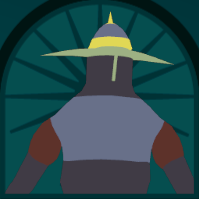
Skills
Shield Bash
While this is the most damaging move the knight possesses, it has a major shortcoming: knockback. Knockback on frontline fighters counteracts the goblin’s indispensable opportunist passive, as it forces enemies out of adjacent tiles. You’ll get far fewer opportunity attacks in by spamming this move, so for that reason, I would personally recommend against using it.
Insult
An interesting ability, and the only mid-range one in this skill set. Unnerve 3 is admittedly good, but you’ll find that there are better skills out there that do that, too (including the woods witch’s frost, which is unlocked around the same time).
Sweeping Blow/Slam
In my opinion, the only worthwhile attack for the knight. The pull effect is especially nice for getting more opportunity attacks in on enemies. The earth-lowering effect is also synergistic with the archer’s lofty. Another really minor advantage is that this move can self-target, but won’t inflict damage on you, which is nice for hitting multiple adjacent enemies. Attacking this way also lets you hit enemies that would be too high up (or too low) for you to normally target. Something to keep in mind.
Flex/Gloat
Exclusively self-targeting, rather weak upfront healing, slow regen, and a little bit of max health makes for an underwhelming ability. Still, it can be strategically used if you have no enemies in direct attack range. I would rather invest a little in some support units to heal your knight from afar instead of going for rugged individualism here. Enemies love using this fairly useless ability, so I will say I’m glad it’s in the game.
Headstrong
A great passive at either tier. Knights are bound to get hit, being sturdy frontline units, and the more you can prevent unnerve (and even turn it into promote), the better. This skill will give you a small taste of just how powerful unnerve-related passives are, with the spellsword’s hyperreactive still out of reach at the point this ability is unlocked.
Oafish
Since many early-game battles are fought in the wilderness, where impassible brush is plentiful, this is a useful ability that will get your knights where they need to be, so that they can start tanking hits and getting enemies to walk by to catch some opportunity attacks. Just be careful not to clear too much brush, as this opens up the potential for enemies to reach your vulnerable units.
Memory
Opportunist. Enough said.
Overall
The knight is an important early-game breed, and is the first specialized frontline fighter available. Sadly, the knight doesn’t have great staying power as better frontline breeds are unlocked. Perhaps the best thing about knights is their 125 bonus health, 50 more than the lowly goblin and the second-highest in the game. Unnerve resistance and brush-clearing are also pretty nice for a tank unit when utilized properly. However, knights struggle somewhat to support themselves in spite of their high health, and they don’t offer a whole lot damage-wise. They do their jobs decently in the early game as a meatshield and basically nothing else.
Tier: D
Archer
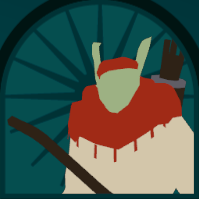
Skills
Fire Arrow/Fire Salvo
The player’s first taste of fire. The first tier of this move is not so great, and even at tier 2, it’s kind of weak. But by tier 3, it deals decent damage, and has the highest potential for causing burning at +9 fire. The spread of fire can be very difficult to control, as you’ll soon find, but it should work out in the end if the fire destroys enemies before it takes you out. Eventually, if you plan on using fire heavily, you’ll want to consider how to prevent it from spreading to you, or perhaps use it to your advantage (with the pit fiend, but that’s later in the game).
(Frag) Lance
Great for an immediately-damaging move, and the only attack skill the archer has access to that targets close-range tiles. The -2 earth effect is a direct boost for lofty, and the unique target shape of this move makes it nice for versatility. This would be my most recommended move overall in the archer’s skill set, even though it’s not particularly incredible, and other moves can serve you well.
Ice Arrow
It’s tempting to opt for the ice arrow in comparison to poison and fire, since it deals the most single-target damage of the three, and it applies “slow” which can severely inhibit frontline opponents. However, I would recommend not investing in it too much, because lofty will provide plenty of bonus damage for those weaker moves. Slow is potentially a good side-effect, though, and sometimes you won’t have height advantage, so I’d say this is still a very viable skill.
(Great) Salvo
Maximizes AoE at the expense of damage dealt. As I mentioned with ice arrow, base damage itself isn’t a big factor when you’re leaning on lofty to pull through. The problem with this skill, though, is the lack of elemental affinity. Having a useful affinity skill is going to become really important if you’re advancing through this breed’s evolution tree (or any of them, really), so take that into account before investing valuable skill points here.
Poison Arrow/Poison Salvo
At first, it looks like an inferior version of great salvo, but the application of poison will deal an additional 40-60 damage over time. The +plant effect may also cause brush to sprout and hinder enemy movement. Damaging moves with plant affinity are relatively uncommon, so this may be a useful future investment when training as another breed, like the woods witch. With that said, poison takes many turns to run its course, so enemies may be able to act before they fall to poison damage.
Lofty
If you plan to spend any time as a longrange attacker, lofty is an essential passive. In fact, it’s so good that it remained a near-permanent occupant in my ranged units’ memory slots for the entire game. +5 damage may seem minor at first glance, but as more abilities become available that target more enemies and influence height (and the fact that you can affect the generated battlefield of random fights by approaching from the high ground), lofty ends up turning even the weakest moves into potentially lethal ones. Nearly every descendant evolution of the archer wants this skill.
Big side note: lofty does not apply bonus power to healing moves. It does state “damage” if you read the description.
Memory
If you’re training an archer, you’re probably not going to have an arsenal of powerful moves to choose from yet. Anesthetize is always an option and works well with other long-range moves. Canticle to heal nearby longrange fighters can be viable. Frost is nice if you’ve leveled in woods witch. Other longer-range, more damaging moves to let lofty do its thing are safe bets.
Overall
Much like the knight was for frontline breeds, the archer is the introductory longrange breed. Archers are a little bit better in my book, as they have the single most universally powerful skill in the entire game (it’s lofty, in case you missed it), plus they have an attack for each elemental affinity. Sadly, there’s not much reason to train an archer beyond level 4, because at that point, you have much more powerful longrange options available to you, with the wizard and future evolutions. Archers are also just as frail as the best longrange breeds.
Tier: C
Woods Witch
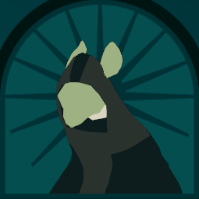
Skills
Frost
Despite its name, frost has nothing to do with ice. Although it lacks in power, it is a very useful skill to have, because unnerve 3 on a group of enemies can be debilitating. I just wish it had 1 additional range, because 3 range is a little close for a breed this fragile. Still, it may be my most used skill in this set. A nice affinity move for other breeds, too.
Sprout/Flourish
Flourish is a powerful move. At 70 power, it’s the highest of any multi-target healing move, tied with the bog witch’s nostrum. Perhaps unfortunately, it spawns dense brush, which makes it unappealing unless your party is ready for that (or if it doesn’t matter, e.g., when your frontline fighters are already in position). Worth noting that the brush-spawning effect can be used in creative ways that give this skill utility beyond healing, such as by stopping enemies short or by boosting the movement of a salamander, which is unlocked later.
Mound/(Tangle) Heap
Although heap does more damage than frost, I would only rarely prefer it. The slightly longer range is nice, but the +2 earth works counter to lofty. It’s really not that much more damage, and a support role isn’t expected to be dealing very heavy damage in the first place.
The final tier of this skill is really odd and not worth it, as the only change is that it creates a single brush at the center (creating brush is more meaningful if multiple can spawn), and it changes affinity to earth+water+plant, meaning it can only be used by battlemages as an affinity skill. Water+earth from tier 2 is already a bit niche.
Clear
Kind of the opposite of flourish since it clears grass, brush, and other (rarer) destructible things. Same range and AoE, but weaker as a healing move. Still a potentially nice one to have, especially the upgraded version that clears status effects. Very strangely, this skill has earth affinity, not plant as the skill icon suggests.
Scamper
A very long-range support skill that probably should have provided some direct healing, but unfortunately does not. This skill on this breed is actually a little odd, and I haven’t found many use-cases for it. It’s not common that woods witches wander too far from the start with the rest of the party, and they certainly don’t want to be vaulted into the front-lines. Maybe it works out when traveling from back corner to back corner. Water+earth affinity again makes it not super reusable. The regen it applies is fine I suppose, but removing status effects is already covered by clear.
Forestwalk
Not the best passive skill, but not an awful one, especially in the early game where brush is plentiful and you have few ways of dealing with it. Synergy with other skills makes this one even more attractive, so flourish and other +plant moves work in its favor, while +fire and breaker moves work against it.
Memory
Lofty has some potential on the woods witch (especially with a strong affinity move), but given the breed’s shorter-range attacks and its propensity for healing, it’s not an essential. First aid is available early on and fills a gap in this skill set for a powerful single-target heal. Apart from that, any longer-range damaging move or defensive move should work.
Affinity
This is usually the first breed you unlock that has an affinity slot. Most breeds from this point on will have them. Affinities are really important to consider when leveling and evolving. Choosing a good combination of memory and affinity can make even a level 1 unit extremely powerful. However, spending a skill point on affinity means having one less skill point to allocate to other skills that you could be using as memories or affinities in other breeds. With that out of the way, I’ll suggest affinity choices you may want:
- Anesthetize (goblin): fulfilling more support duties to assist frontline fighters
- Frag lance (archer): adds some range and bigger damage potential, paves the way for lofty fighters to do more damage as well
- Stalagmite (battlemage): to protect vulnerable allies or stop enemies from reaching you
- Anything with high range / damage to fulfill more offense-oriented roles.
Overall
Archer is to longrange as knight is to frontline as woods witch is to support: they’re introductory. The woods witch is an interesting one, though, as it’s not exactly a stepping stone in the same way the archer and knight are. You’ll have to spend quite a bit of time with the woods witch in order to unlock the bog witch and druid. Making the most of this by leveraging the witch’s more powerful skills will reveal a breed that isn’t bad, but not great, especially since the more wacky strats that revolve around support units isn’t prevalent at the stage you unlock the woods witch.
Tier: C
Wizard
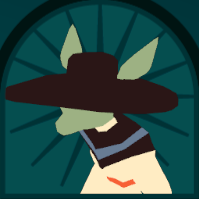
Skills
Furrow
The highest tier of furrow is a staple for a lofty-obsessed team. It’s also the third-highest damage-dealer in the wizard’s powerful array of abilities (ice meteor 2 is effectively more damaging with knockback). Compared to the similarly-shaped sprites, this skill is more damaging and just as reusable with pure earth affinity.
(Thunder) Sprites
A nice move if only for being decently powerful, long range, and having water affinity. The last tier, thunder sprites, decreases damage and (I think) adds fire affinity, but it spreads across water. With some environmental manipulation, this can be a devastating move, but it’s hard to predict exactly which tiles are hit by water-spreading moves (it’s not just high water or soil moisture; some nearby tiles are hit, too). Just be careful of friendly fire. Staying on tier 2 might not be a bad idea.
Spark/Combust
Combust is up there with the most damaging AoE moves in the game. Only the lavamancer’s crater is just as damaging with a larger target radius. However, it takes 3 skill points to get there, and the lower tiers are single-target. Plus, its range is only 3, which slightly hurts potential lofty damage. On the positive side, it lowers height by 1 at max tier, and it can spread burning easily with +9 fire.
(Ice) Meteor
Personally, this is my favorite move out of all of the powerful wizard skills. Weirdly, ice meteor has a dual fire+water affinity, which makes it less reusable than the other single-element skills, but at the same time, 45 base damage, -3 height, and knockback 2 (which basically makes this move 55 base damage) is astonishingly powerful. The plus-shaped AoE is nice, and the long range makes it easier to abuse height differences from lofty. Also, adding water and lowering earth naturally leads to sinking the enemy into water, which could even lead to deep water.
Whirlwind
Not a bad move at all, to be honest, but it may be the weakest wizard skill. This takes the archer’s great salvo 2 and improves upon it, with a more flexible range and pull 2 to add some extra damage. It could definitely use some additional damage boosts, and it has no affinity, which makes it less appealing in one of the strongest skill sets in the game.
Flare
This is the first move of its kind, one that can hit quite a few targets when used correctly. The trick to this move is maximizing enemies hit while minimizing friendly fire. There happens to be a very good time for that, and it’s at the very beginning of just about any battle in the game. Flare and other skills like it are perfect “opening moves” that can tip the scales of some very difficult fights. It’s best used from the back row (and somewhere high up, assuming you have lofty). Even with unnerve 1, it can be very satisfying to bring many enemies down in the turn queue. Be aware that you’ll eventually run into frost giants and sylphs who have hyperreactive. Sometimes, the damage inflicted outweighs promoting them, though.
This move isn’t as strong as the gorgon’s glare (no affinity) or the elementalist’s flash (shares fire affinity), but you won’t be able to access those moves for a while, so flare is there in the interim. From the point you unlock this move, you should have a wizard (or another fire-affinity unit) at the first slot in your party flaring from the back row in almost every battle.
Memory
If it’s not lofty, you’re making a big mistake.
Affinity
- Frost (woods witch): for some added unnerve when flare either isn’t enough or risks friendly fire
- Frag lance (archer): if you’ve just upgraded to wizard and want to start hitting hard immediately
- Hailstorm (gorgon): not unlocked until later in the game, but great for adding a long-distance attack
Overall
Finally, a breed that’s actually strong. So incredibly strong, in fact, that almost every other longrange breed feels underwhelming, at least for a while. You’ll barely notice that wizards have no passive abilities of their own, since their entire skill set is focused on AoE damage, which is only magnified by lofty. There are breeds that match this one’s power (namely, the lavamancer), but wizards still dominate the early-to-mid stages of the game.
Tier: A
Battlemage
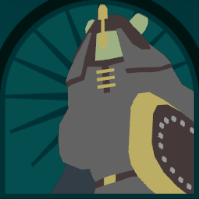
Skills
Surge
The best damage battlemages have access to. The cone-shaped AoE can hit many enemies by the time this skill maxes out, but you also lose out on the heavier damage of the second tier. It’s worth considering either variant, although if you’re looking for a really good damaging attack, you might be better off slotting in an affinity.
Thirst
One of two “sapping” moves in the game, the other being the lich’s leach. This one is slightly less powerful, but at its max tier, it affects 3 extra tiles compared to leach. The damage and healing it provides is generally very solid, but you won’t be gaining a ton of health back unless you power-boost or hit many targets at once. Great move nonetheless, and an excellent affinity for other water-aligned frontline breeds.
Tend
A base power of 85 is the highest unmodified value in the game, but it comes at a cost. Single-target healing is already a bit underwhelming, but the range of 1 is what really hurts this skill. You can use it to heal yourself, but why would you when you can just spam thirst? You’re also going to need better mobility to effectively heal adjacent allies. Some other breeds might be able to put this one to use better than the battlemage, though, and strong healing becomes important later in the game when you have the trinkets to boost to high health.
Soothe
A 3×3 healing move that improves upon the woods witch’s clear (this skill doesn’t remove status effects, but maybe that’s for the better since you can remove buffs that way). I like this skill a lot more than tend, at least for general purposes, despite being just as short-range. Smoothing earth has some interesting implications for lofty-reliant teams as well.
Immovable
Nowhere near as powerful as many other passives in the game, but I will say it’s nice to avoid getting pushed out of opportunity attack range. Activate it if you have extra skill points, but it’s not high priority.
Stalagmite
One of the more interesting skills in the game, but not necessarily the most useful. Situational as it may be, this can significantly influence the flow of battle in the right circumstances. I just wish its range were a little longer. Can be used to surround a vulnerable ally or cloister enemy frontline units. Wouldn’t recommend self-targeting with this unless your battlemage has a very unique build.
Memory
Opportunist again. Sturdy fighters like battlemages will be able to plant themselves at enemy choke points and unleash many opportunity attacks. Immovable keeps them in place for these as a small bonus.
Affinity
- Breaker (spellsword): great for momentum, especially since battlemages lack any movement-enhancers of their own
- Garrote (goblin) / sandblast (spellsword): two attacks that deal heavier damage, which the battlemage skill set lacks
- Frost (woods witch): for extra unnerves and a little damage from a distance
- Some of the more unique support moves from the bog witch or shaman could work, if you have them unlocked
Overall
A hybrid support/frontline fighter with pretty good bulk. Battlemages have some difficulty building strong synergy when they first become available, and then they become sort of obsolete once better options come into play (both shaman and salamander). Despite the underwhelming passive and not particularly exciting healing moves, battlemages serve their most obvious purpose of tanking and keeping your party alive, and that’s just alright.
Tier: C
Spellsword
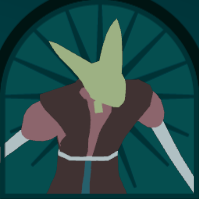
Skills
Breaker
An indispensable move for any water-aligned frontline fighter. While the higher tiers won’t boost damage, they’ll increase the range and AoE, which is very much worth it. This is a fantastic move for mobility, allowing frontline fighters to deal damage from afar and move into place to trigger opportunist.
Bedlam/Nightmare
The one skill in this set that I could take or leave. Decent damage and a large AoE, but a tough one to utilize effectively due to its awkward shape. Breaking things and modifying terrain chaotically (basically moving some ground and adding a little ice) is amusing but not especially useful, but the real dealbreaker is the lack of affinity (or does it require every element for affinity? Perhaps we’ll never know).
Sandblast
A powerful close-range attack capable of hitting two targets at a whopping 65 base damage, some of the highest in the game. It’s not on the level of garrote or sting, but it hits an additional target compared to the equally powerful repulse from the polearm, and it doesn’t need to target an enemy from behind to unleash full damage. It also lowers earth, which is nice for reasons you already know by now if you’ve been reading (lofty, if you haven’t been reading).
Blood Curse
A skill that’s admittedly not always enticing to use, given that spellswords are able to move in and start dealing damage right away with breaker. In certain longer battles, it can be put to great use, but the 500 tick duration usually means that you as the caster probably aren’t going to have that +20 power by your next turn. In tandem with an “unnerve all enemies” leading move, a spellsword could move in and cast this on 3 other teammates, which is effectively 60 power plus some potential for reflect damage. Not bad.
Hyperreactive
Behind opportunist and lofty, this is one of the best passives in the game. You’ll hate to see enemies with it, but you’re able to take better advantage of it than they can. To make the most of opportunist, you actually want to face away from the enemy; they’re not smart enough to account for the inversion and will promote you almost every time.
You don’t want to use +promote support moves or reduce unnerve effects on a hyperreactive unit. You do want to use +unnerve moves on them, if they’re helpful. The best example is the bog witch’s nostrum. Entire teams can be built around hyperreactive, with great synergy potential if you take a bog witch with nostrum, sleet, and a +unnerve trinket.
Freezing Ray
Ice isn’t the most useful property in this game, since there aren’t that many battlefields covered in water (there are a couple, though). Slow can be useful on certain enemies, although the max range of 4 here will usually put these enemies in range of you. Effects aside, this is a decent mid-to-long-range attack for times when you can’t breaker to the enemy without friendly fire or you just don’t want to be moved.
Memory
Most often, it’s opportunist, but other options may be viable. The worm’s rage is great for boosting damage and increasing any weaker health-absorbing affinity moves. Taking ice meteor for affinity may warrant using lofty (at which point, you can let any extra skill points give you bonus power).
Affinity
Many strong options here:
- Garrote (goblin): breaker will quickly bring you to the enemy’s back lines, after which you can follow it up with this fatal backstab
- Ice meteor (wizard): or any other hard-hitting long-range damage skill. I listed ice meteor since no other breed can use it quite as effectively as affinity
- Thirst (battlemage) / leach (lich): allows for self-sustaining, pairs well with rage for extra healing and hyperreactive for the extra promotes
- Rage (worm): further boosts the breed’s already-high DPS. Rage, opportunist, and hyperreactive on a single unit is an absolute nightmare
- Raze (pit fiend): while you don’t exactly need any more damaging moves, raze may be prove to be absolutely brutal on a team abusing lofty
Overall
Take the best features of the heavy-hitting wizard and combine it with the up-close and personal nature of a frontline fighter, and you have the spellsword. The breed’s only weakness is its relative frailty as a melee unit, with 100 base health (still better than the salamander or lich, though). For that reason, you’d do well to bring another frontline fighter along to help distribute meatshield duties, and maybe take a healer for support. Spellswords have perfect affinities for their role, giving them a ton of versatility. You can turn into your team’s thorn+taunt damage reflector with big health boosts, a long-range sturdy wizard, or a straight-up glass cannon fighter. I really believe the spellsword is better than most of the late-game locked breeds. You may find yourself returning to them after unlocking everything, as I did.
Tier: S
Polearm
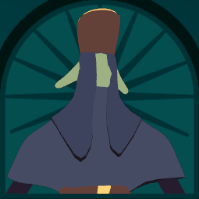
Skills
Skewer
A simple damage-dealer with a range slightly longer than melee distance. It’s a decent attack, but it’s no sandblast. I guess the one advantage is that it allows hitting things diagonally.
Repulse
Devastatingly powerful single-target damage. It actually beats sandblast on one target if you account for the 5 additional knockback damage. Being able to step forward slightly has some tactical advantages, including maintaining adjacency for opportunity attacks.
Jump
Like the spellsword’s breaker, the value of this skill is in its movement effect. Sadly, the damage, AoE, and affinity of breaker are not quite comparable, and there’s knockback applied, which hinders opportunist. It’s a flexible move, though, and unlike breaker, you can jump directly over allies without hitting them.
Praise
Probably only worthwhile if you’ve upgraded it and are targeting multiple allies. The fairly long range makes this pretty flexible. I didn’t use it too much, though; I generally prefer hitting enemies with unnerve 3 moves over giving allies promote 2. Hyperreactive on allies complicates things.
Inspire
Has the potential to hit many allies, and it ignores enemies in range. It heals very little, but a little is better than nothing (at least it can be boosted). Unnerve reduction is the best part, but don’t use this on a hyperreactive fighter.
Charge
Now this is a wacky move. Setting up a powerful charge with 2 adjacent frontline friends does a lot for you, but it’s rare that you get into situations where you’re all hitting enemies. The big gotcha with this skill is that it requires a clear path for all charging units, unlike many other skills. No other move allows moving your own units externally, apart from damaging pull/knockback maneuvers, so there’s that. I would only recommend using this if your party comprises multiple frontline units.
Protective
Since there are not many damage-mitigating moves at all in this game, protective is pretty special. Has great synergy with inspire. I enjoyed jumping into enemies and then moving over to protect an ally or two. One slightly unfortunate caveat of this is the fact that your skill set generally doesn’t allow allies to stand in your way.
Note that protective does not stack at all. That would be pretty overpowered, wouldn’t it?
Memory
Mostly opportunist. If relying heavily on jump, you may want headstrong or hyperreactive.
Overall
Don’t let their lanky silhouettes fool you: polearms are absolute units. At 140 base health, they start with more health than any other goblin. Their skill set is straightforward, favoring defense for nearby allies while dealing hefty damage to opponents. With that said, polearms have no affinity slot or any skills with elemental affinities, which, for such an advanced breed, is almost unforgivable. They are fairly independent and are able to hold their own throughout the game, but they shouldn’t be relied on to a ridiculous degree.
Tier: B
Shaman

Skills
Plow
A mid-range attack that can’t self-damage. Deals pretty decent damage when maxed out. Height-lowering works well with lofty.
Gather
I love this skill on the shaman. It brings multiple enemies closer to you, bumps them into each other, and if they bump into you, they can take thorn damage, potentially multiple times. Pull may deal a bit of damage to you, but it should be counteracted by regen. Then, when they move away, you can let opportunist do its thing. Surprisingly, it has earth affinity, but it’s not terribly useful on other breeds.
Thicket
A weak and niche skill that’s more for support purposes than anything else. Brush creation may be nice for salamanders or bog witches on your team to make use of in the future. Even though it’s short-range, it can’t hit you.
Thrive
Applies two nice status effects that keep you alive while chipping away at enemies. It’s too bad it’s single-target only, but it at least heals for a substantial amount, especially from regen (+90 health over time). Sadly, this thorn effect does not stack with the thornmail. You don’t need the last tier unless you want the extra 20 healing upfront.
Bewitch
My favorite move of this skill set. It works perfectly with the shaman’s role as a hybrid support/frontline fighter. Bewitch lasts a very long time, slightly decreases enemy power (-10 isn’t a whole lot, but there aren’t many other -power moves out there), and poisons enemies for 40 damage if you reach the max tier. The best feature, though, is the taunt aspect, which fixates enemies on you. Combined with the thorn effect of thrive (or the thornmail) or blood curse (maybe both), you practically send enemies to their graves by getting them to hit you.
Grapple
I found myself never using this move. Not enough damage to be worthwhile, and swapping positions rarely ever makes a big difference. Maybe it works in some very niche situations, but there are too many other good alternatives to justify spending a skill point here.
Memory
Opportunist, unless you’re going for some gimmicky support-heavy strat.
Affinity
- Ram (worm): if you choose not to invest in gather and find yourself in need of a high mobility move
- Stalagmite (battlemage): an additional support move that serves unique but rather niche purposes
- Fertilize (bog witch): allows taking out weaker enemies easily and spawning some helpers
- Sandblast (spellsword): for dealing big close-range damage
Overall
Not the best breed out there, but one of the strongest with a support-heavy skill set and high enough bulk to be self-sufficient. I think of the shaman as an improvement over the battlemage in most ways. You’ll need to think carefully about how to utilize skill points, since almost every shaman move is 3-tiered. I think the general idea with shamans is placing them near enemies and slightly away from allies, pulling enemies in and taunting them, whittling them down with recoil damage. I had a shaman on my team for most the game, so I’m partial to them.
Tier: B
Worm
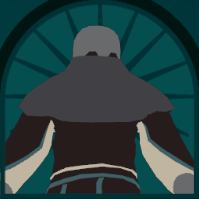
Skills
Sluice
Deals big damage on par with ram, but it has a more flexible range due to being able to hit any tile up to 4 away, so it’s not exactly redundant. Its targeting mechanic of hitting the tiles beyond it without extending past the max range of 4 is a bit oddly restrictive, nevertheless.
Burrow
A utility move that you rarely ever need. It does get you farther along the battlefield than, say, breaker, but no healing, damage, or status effects inflicted adds up to a high opportunity cost. You even have another skill that moves you a fair distance.
Ram
A highly damaging move, among the highest that targets more than a couple tiles. You’re only able to use it in cardinal directions, though, and the need for a free tile in your path means that you can’t hit a continuous line of enemies like sluice could. The good news is that the knockback on enemies you pass through doesn’t cause them to be pushed out of opportunist range.
Thrash
Notable only for being a different shape compared to the other attacks in this set. Thrash is decent when fully upgraded, but at this point in the game, you probably have better options.
Rage
One of the few status effects that stacks, which naturally makes it one of the best passive abilities out there. When taking multiple weak damaging effects like knockback and pull, you can accrue many additional rage statuses. It’s cleared when you take action, but notably, it’s not cleared when taking bonus attacks from opportunist, and it still boosts those attacks.
Filthy
Muck is very situational, because it can hinder enemies as well as your own team. It might be worth picking if you don’t have many other frontline units, or if they all have ways of skipping over the muck you create. This pales in comparison to rage, and I find that there’s little synergy here with other moves in the skill set.
Memory
Almost certainly opportunist, if you realize its synergy with rage.
Affinity
While there are probably some other decent options, there are two that particularly stand out, for the same reason:
- Leach (lich) / thirst (battlemage): stack up rage and heal yourself back to full for the ultimate self-sustaining tank
Overall
Every single attack in this skill set breaks destructibles. Thought I’d point that out. The worm is probably my favorite-looking breed, but it’s not one of my personal favorites in terms of gameplay, even though worms are fairly bulky, have powerful attacks, and unlock a passive that only further boosts those attacks. My main gripe with worms is that they’re a little too one-dimensional. Their skills are inflexible enough to be useless in some scenarios, but not so inflexible that it warrants bringing in an almost-redundant move like breaker. Generally, I unlocked rage and put in on other breeds for better results.
Tier: B
Salamander
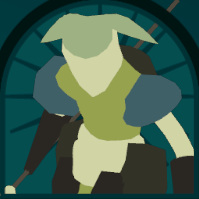
Skills
Sting
At last, a move that outdoes garrote. This is the most essential move that the salamander has to offer. It does the same base damage as garrote but adds 40 additional poison damage over time. Plus, with forestwalk 2 and waterwalk, you’re able to move in behind enemies and deal double damage pretty consistently.
Rot
This innocuous-seeming attack is devastating in certain situations. Once again, you’re able to take advantage of the AI being stupid: they don’t take the “blight” status into account at all, so they’ll attempt to heal their allies and knock them out in the process. Some interesting synergies arise with this and the bog witch’s sleet, if you’re able to apply rot to a fair percentage of enemies. If you play it right, you can heal all of your team while damaging all the enemies. If it had a higher tier that increased the AoE, salamander might have been my MVP.
Retch
Pretty underwhelming light damage with some poison tacked on. It doesn’t hit quite as many targets as some of the other “dragonbreath”-shaped moves, which makes it inferior to, say, the druid’s miasma. There are better options than this, including not spending skill points at all and getting some valuable bonus health.
Cleanse
Not quite as powerful as a single-target healing move as cleanse from battlemage. Status effect removal can often do more harm than good, but if you find yourself poisoned or something, maybe this comes in handy. You can actually deal good damage with it if you apply this to a blight-infected enemy, but then again, you already have sting.
Forestwalk 2
It’s kind of neat that an upgrade to the woods witch’s forestwalk exists on another breed. There’s basically no reason to keep the aforementioned skill once this is unlocked, although this one is not quite powerful enough to warrant slotting in for a memory or affinity. It helps the salamander out a lot, though: on brush-heavy battlefields, you’ll be able to walk onto pretty much any tile, behind any enemy, and dole out sting for that sweet double damage.
Waterwalk
Not quite as universal as forestwalk 2, but still a great skill to prepare in some of the water-heavy maps. I’ve put teams together that heavily abuse flooding mechanics, and unfortunately, the calculation for melee attacks is a little counter-intuitive with waterwalk (it seems to consider your unit as still on the ground even though you’re floating above the water). Just a small detail to keep in mind.
Memory
Opportunist is an option, of course. Since salamanders aren’t quite as good at defending choke points, other options like hyperreactive are tempting.
Affinity
- Breaker (spellsword): in battles without much brush coverage, you may need to make up for your lack of longer-range moves
- Fertilize (bog witch): A mid-range move that’s nice for spawning some little distractions out of weaker enemies
- Various water- or plant-aligned healing moves if you’re going with rot and dislike the status-removal of cleanse
Overall
They’re not the most durable breed that enters the front lines, but salamanders are pretty much the ideal assassins. They can rack up a bunch of bonus movement where others are generally stopped short, sneak behind enemies, and bring them down with sting. That’s their most obvious purpose, anyway. There are some neat opportunities for rather out-there, support-heavy strats that rely on poison and rot, too.
Tier: B
Pit Fiend
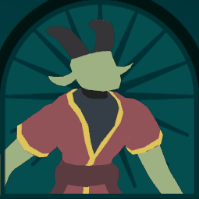
Skills
Flame Strike/Lava Strike
Worth it for the upgraded version that produces lava. The applications of this attack are versatile: you can let the lava burn down the last of your enemy’s health, or you can finish off a weaker enemy and stand in the lava to heal up with flash sweat. You might actually want to use this on an enemy that won’t be moving anytime soon to milk the 100 extra lava damage.
Flash Sweat
A great passive for this breed and for others that focus on fire. Counters those pesky fire giants that love to spam lava strike on you. Regen from burning is much (4x) faster than the basic regen effect. Stand in the lava you create from lava strike or from lavamancers casting lava flow. I kinda wish there were more interesting lava-creating moves just because of this passive.
Note that this doesn’t cause fire-aligned attacks to heal you; it causes burning to heal you. I got my hopes up thinking any fire damage would heal me, but this ability still turned out to be a good choice.
Slam
Not to be confused with the knight’s slam, this one is more damaging and hits more tiles. At its highest tier, 55 damage on 8 tiles is nothing to scoff at, and -3 earth works with both lofty and raze. A good move, but not the most essential in this skill set. Takes 3 skill points to max out compared to the other 2-tiered attacks.
Raze
This attack has potentially limitless power. 15 extra damage per height difference becomes massive very quickly: you only need a difference of 2 to match the damage output of the spellsword’s sandblast. In a lofty-heavy group, you can turn into the real powerhouse of the team instead of the longrange fighters if you manage to pull off a well-placed raze.
Ridge
It’s nice to have a mid-range attack in this skill set. Increasing enemy height does work against lofty, but it can set you up for a more potent raze. I’ve used this move to create walls around some arenas to fill it up with water, which takes a while but comes in handy in some special fights.
Mark/Bespeak
A weird ability, useful for bringing enemies closer and dealing with battlefields that have been ravaged by earth effects. The range of 8 (the highest of any ability, apart from full-battlefield AoE) is great, and the additional pull of bespeak complements opportunist. Without this or another long-range move, you may find your pit fiends wasting turns.
Memory
You may be tired of hearing this, but opportunist is pretty nice on this frontline breed.
Affinity
- Crater (lavamancer): for longer-range, high AoE damage
- Lava flow (lavamancer): a less damaging option for a ranged attack, but the lava it spreads across the ground can decimate enemies and heal you
- Rage (worm): you may not need additional power that badly, but maybe you do
- Ram (worm): for simultaneously attacking and getting around (which becomes difficult if you’re modifying earth heavily)
- Immolate (elementalist): since you have higher base health, you can make use of this arguably better than an elementalist can, but you’re probably going to be toast after casting it
Overall
Given the powerful healing abilities of flash sweat and many synergies with other breeds, the pit fiend is almost on the level of the spellsword, but just barely falls short of that greatness. Lots of hard-hitting moves and high base health make it an independent breed that carries its weight in fights. Exploiting powerful earth and fire synergies make pit fiends even better. Just don’t go wild shifting earth around to the point where you can’t move (or do it and get a lavamancer to cast basalt on you).
Tier: A
Lich
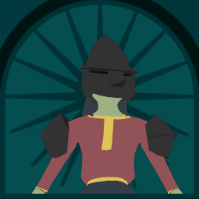
Skills
Shatter
This attack is admittedly powerful, better than the worm’s similarly-shaped thrash, but knockback obviously hurts opportunist. This isn’t such a bad thing on the lich, since you don’t really want to be up in every enemy’s face, and the extra damage is nice.
Spit Oil/Spit Boil
Unnerve 3 is nice even though this is single-target. The status is only applied for 360 ticks, which is not very long. This move is best used on enemies that are already burning. With “boiling oil” under constant fire damage, this attack will do an additional 240 damage over time. This makes it a fantastic move against some of the difficult bosses in the late game.
Dragonbreath
Almost an exact copy of the battlemage’s surge, but with +9 fire instead of water. The applied fire will likely burn some enemies for more damage. I’m not a big fan of the “fan-out” shape of this attack, but it’s not a bad move.
Static Jump/Bolt
In some ways, it’s an upgrade to the spellsword’s breaker, since it has an additional tile of range and can hit many enemies. But like all other water-spreading attacks, I find this difficult to use without either crippling my own allies or prepping the battlefield, so I prefer the easy predictability of breaker.
Leach
One of the best skills a frontline fighter can access. Surprisingly good range, no self-damage, and a simple water affinity allow it to be useful on many other breeds. The lich can utilize it, of course, but you will probably want some rage and bonus health trinkets to ensure it can be used effectively.
Nimble
There aren’t many movement-boosters in the game, so you might as well take this if you have a few attacks already. You don’t have that much of a problem with mobility as a lich, though, since you probably have breaker or bolt.
Memory
Not necessarily opportunist, especially if you’re using shatter. The lich isn’t quite bulky enough to withstand that many hits, so it’s possible that you’re better off using hyperreactive. Like the spellsword, there’s some potential to stay back and exclusively use long-range moves with lofty.
Affinity
- Rage (worm): for boosting leach
- Flash sweat (pit fiend): in case you catch fire from your own dragonbreath
- Garrote (goblin): additional movement from nimble gives you better potential to backstab
Overall
What should have been a clear upgrade to the already amazing spellsword is, as it turns out, just a pretty good breed. The lich actually loses some base health, trades in a top-notch passive for an alright one, and doesn’t get quite the same level of power as the spellsword. They do get one amazing attack, which is leach, but they barely have enough bulk to live long enough to make good use of it. They require a certain level of forethought to be used effectively, but they can still be powerful, fast, glass cannon frontline fighters with mid-range capabilities.
Tier: B
Druid
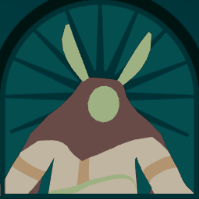
Skills
Bloom
A slightly larger AoE than other multi-target heals still doesn’t make this a great ability. You invite brush spawns almost like flourish due to the +9 plant. There aren’t that many cases where targeting a few more tiles makes that much of a difference, and sometimes it even means healing enemies.
Encase
Sort of weak unless you can boost your power a bit to affect that max health increase. I didn’t really like this skill as I didn’t find myself needing the bonus max health. I will say, though, it’s fun to use this on bog bodies.
Miasma
One of the few obviously valuable skills in this set. Poisoning a big group of enemies is satisfying, although a range of 4 means you’ll have to move in fairly close to them, and 5 base damage is pathetic. If it applied “blight” or something as an additional effect, it would have been an incredible skill.
Renew
Out of the druid’s healing moves, this one I liked the most. Regen will give your allies an additional 90 health over time, provided they stay alive. The base healing is just as weak as encase, but I’d take regen over max health: regen is going to lessen the blow of future damage, and bonus max health is just going to cut off at some point.
Hedge
Apart from some very gimmicky strats involving bog witches and salamanders, there’s not a good reason to go around spamming brush when you have enemies to take down. And if you are creating brush intentionally, you might as well be doing it with a useful move like flourish or even thicket.
Hill
Why couldn’t this have been one of the healing moves? That would have made the druid a key player in milking lofty damage. Unfortunately, this turns out to be a lesser version of the lavamancer’s mountain, with all the same properties and about half the damage.
Memory
Hard to say exactly. I probably wouldn’t pick lofty first because they can’t use it that well. Protective could maybe help defend nearby vulnerable friends. Incinerate could actually be interesting given druids often spawn grass, but it might get you in trouble.
Affinity
- Tend (battlemage): for strong single-target healing, which is missing from the druid’s skills
- Fertilize (bog witch): for a useful offensive capability
- Flourish (woods witch) / nostrum (bog witch): for actually strong multi-target healing
- Forestwalk 2 (salamander): for better movement through brush, which will inevitably spawn near you
Overall
Poor little druids. They’re cute, but their skill set is the most frustrating thing ever. Their attacks are underwhelming and just slightly short in terms of range. They have multiple healing moves that are pretty redundant, and they don’t even have the strongest heals in the game. On top of that, they have no passives and a borderline useless brush-spawning move. I imagine there could have been some potential here, but it seems all of the interesting plant moves went to the bog witch.
Tier: F
Gorgon
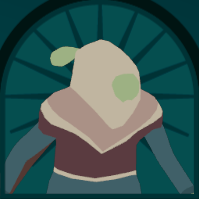
Skills
Glare
I don’t want to sound biased, but this is best ranged attack in the game. I explained a bit about this category of ability with the wizard’s flare, but glare is the best of them all. There are a few things about it that make it incredible: the relatively strict targeting rules make friendly fire much less likely (without losing many enemy targets), slightly more base damage at 20 plus some knockback (lofty really takes it to the next level), and most importantly, unnerve 3. If you lead with glare, the enemies you don’t obliterate will be moving after your entire party gets to do whatever they want. The only downside is the lack of affinity, meaning you’ll basically need to be a gorgon or an archer to make full use of glare.
Hailstorm
Although it’s slightly lacking in raw power, the range of 7 makes it quite useful. Lowering earth by 2 helps with lofty, which is already very useful for such long-range moves. The final tier of this ability that hits the whole battlefield is kind of a downgrade, considering not many moves have 7 range, and if you need to hit lots of enemies, you always have glare.
Blizzard
A slowing move such as this would have been great if it had slightly longer range. The unnerve is a plus, and ice is helpful in rare situations, but other than that, the previous two skills make this one less enticing.
Crystallize
Like the druid’s hedge, a move like this that only affects the environment but doesn’t heal or deal damage is kind of a waste unless you have a really good reason to do it. It does have long range, and it creates a continuous path, so in some of the larger arenas where movement is really important (and other units have poise), this could have potential use.
Wave
The hardest-hitting skill in this set, with good range, knockback, and a ton of water production that could help you form some deep water. Raw damage isn’t the gorgon’s biggest draw, but it doesn’t hurt to have a move like this.
Poise
One of my least favorite passive skills in the game, honestly. Movement through brush is very useful because it otherwise stops movement immediately, but ice doesn’t have this property. So it’s really just a little move-boost in a place where you generally don’t need more movement. Ice is susceptible to breaking, especially from your own moves, and basically no other breeds make use of ice.
Memory
Absolutely lofty.
Affinity
- Leach (lich): for surviving longer
- Waterwalk (salamander): if you’re spamming wave and planning on creating deep water
Overall
Ignoring the fact that about half of this skill set is pretty meh (you don’t utilize every single skill normally anyway), the gorgon is an incredible longrange breed (which could have had better support skills coming from the woods witch, but that doesn’t really matter). I had at least one gorgon on my team from the point I unlocked them right up to the end of the game, and they always went first. Put your highest power trinkets on them, glare the battlefield, then stay back and use your subsequent turns to hailstorm from afar. Gorgons are the ideal lofty abusers, but even on a flat battlefield, you can make use of the secondary effects they inflict.
Tier: S
Bog Witch
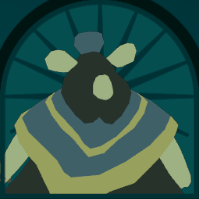
Skills
Sicken/Fertilize
The most clearly useful bog witch skill. Max health reduction by 100 (plus bonus power) means instant death for enemies with equal or less max health. Poison whittles them down by 40 of their remaining life. Unlocking the last tier to spawn bog bodies is very fun, but enemies will prioritize taking them out because they’re rather weak. There are ways you can increase the chance of your bog bodies surviving, by putting encase on them and weakening the enemy with imbue frailty or bewitch. It’s tough to get bog bodies going under normal conditions, but at least they provide a distraction from your permanent party members taking hits.
Sleet
The only healing move that hits everything on the field, allies and enemies alike. Broadly speaking, in most battles, you’re outnumbered, so you’re more likely to benefit enemies more than your own team statistically if you’re just using this skill at any given time. There are neat things you can do with this, though. In particular, using the salamander’s rot skill can cause enemies to take damage from sleet.
Imbue Frailty
A better move than imbue vigor, considering that the bog witch wants to prolong battles, let enemies rot, and spawn more bog bodies. Reducing power by 60 (not boostable) is pretty extreme, with most attacks doing 0 damage while standing in this brush. There are uses for this skill, but you’ll want to be careful not to leave allies in frail brush, and you won’t want your team burning or breaking things.
Also worth a note: the “frailty” effect only applies to existing brush, and won’t be present on any that are newly-spawned.
Germinate
Interesting idea conceptually, but 120 ticks go by after like 4 units finish their turns, which could be a good thing or a bad thing. I didn’t end up using this much, because it’s hard to work in without crippling your own team. I imagine you could use this to ensure that only enemies are affected by strongly unnerving your opponents (with glare) and having your bog witch move last.
Imbue Vigor
This skill kind of goes against the bog witch’s strengths by speeding up the battle. Making already quick battles faster just means that you lose the value of poison, bog bodies, and other weakening moves. I certainly wouldn’t recommend hitting the entire battlefield with this, and would be very careful applying it near any enemies at all, because they can take advantage of that +40 power, too.
Nostrum
While “vampiric” is a great status in theory, the unnerve that comes with this skill means it may wear off before you’re able to use it (200 ticks isn’t a very prolonged status effect to begin with). This is as powerful as multi-target healing moves get, though. If used on hyperreactive units, the benefits are only positive. It would have been more fun if this healed a little less upfront and gave a longer vampiric effect. It also can’t self-target, sadly.
Memory
Lofty will do you no good. If you’re committing to the bog witch, you may have to slot something in here that works with a niche you want to exploit: waterwalk, hyperreactive, flash sweat, etc.
Affinity
- Forestwalk 2 (salamander): since multiple bog witch skills deal with brush
- Miasma (druid): for spreading poison around, which is nice if you want to use your power-boosting trinkets on other team members
- Tend (battlemage): for stronger single-target healing
Overall
A strong contender for the weirdest breed in the entire game. The bog witch has no directly damaging moves, although you basically get to do heavy damage via fertilize. I found that the general usefulness of bog witches is not at the same level as other late-game breeds, as you can’t simply slap one on your team and call it a day. They’re purely support units that require a slower and more thoughtful play-style to make the best of their abilities. I didn’t get the hang of using them until close to the end of the game, but they do serve niche purposes really, really well, and my overall rating doesn’t quite reflect that.
Tier: C
Lavamancer
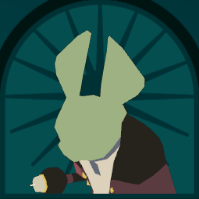
Skills
Crater
A devastating move, with high base power and -4 to earth. Basically, every subsequent crater on the same spot will deal 20 additional damage with lofty. Sinking that low hinders enemy movement, too. The shorter range (common with this skill set) is a slight downside, but there are trinkets you can equip to remedy that.
Lava Flow
A decent backup attack that can deal up to 100 damage over time from lava. The ability to adjust the path of the lava makes this flexible. +1 earth is slightly unfortunate, but not if you’re moving onto the lava and you have flash sweat.
Mountain
Even though it’s a damaging move, it’s tempting to cast this for support purposes and potentially not hit anything. That +6 earth can provide 30 additional lofty damage if you can jump up there. Be careful spending valuable turns doing this, though; it’s probably only worth it for the tougher, longer fights.
Basalt
I did say that mountain was nice for amplifying lofty, but this one is too, and it won’t damage your allies. Moving while “tectonic” can open up some interesting tactical possibilities. I wish this had just a tiny bit of healing to make it more worthwhile.
Quake
It may have the longest range in the skill set, but the damage and lack of predictability decrease the appeal for me. Nice for slowing down enemies, though. Like the gorgon’s hailstorm, I would hesitate to upgrade this to tier 3.
Abyss
Another option in case you want lava flow but with earth-lowering. It’s a less flexible AoE, but it should hit close to the same number of enemies in most cases.
Memory
Surprise, it’s lofty. Damage good.
Affinity
- Flash (elementalist): for mobility and long-range, multi-target damage
- Soothe (battlemage): can modify earth to bring other lofty units up any nearby cliffs and heal them at the same time
- Flash sweat (pit fiend): if you want to heal from your own lava flow
- Many of the more interesting elementalist moves: incinerate, boil, immolate (all pure fire affinity, oddly)
Overall
Lavamancers fill the same longrange role as wizards, just with more focused earth-altering moves (every single skill in this set modifies earth). This makes them ideal lofty users. Their attacks tend to fall short by 1 range compared to the wizard, but you can equip a +1 range trinket to make up for it. You’ll also want to ensure that you’re properly accounting for team synergy at this point, such as by avoiding water that cancels your lava. If you have that covered, you’ll find that this breed is very powerful.
Tier: A
Elementalist

Skills
Geyser
Most of the elementalist’s skill set removes water, but this one creates it with a terrain effect. Skills like boil are dependent on water, so unless you have this move, you’ll want some teammates piling water on enemies. Other than that, this isn’t the most notable move, with a standard range and damage, plus some knockback (which makes the geyser’s damage somewhat irrelevant).
Flash
An interesting move in the vein of flare and glare. This one shares more in common with flare, but it’s more powerful and more dynamic, since you have many target tiles to choose from. The base damage is the highest of its kind, dealing 45 pre-boost damage if choosing a destination 7 tiles away. The burning effect is really short and will only deal 6 damage unless you move to a very grassy area. It’s a great skill to have, even if it’s not glare. Fire affinity makes it more reusable from other breeds.
Boil
The potentially limitless power makes this a theoretically amazing move, kind of like the pit fiend’s raze. The reason I don’t like it as much is, once again, the water-spreading aspect. It’s difficult to control the AoE beyond tier 1, and it also loses 2 range after upgrading. At tier 1, it’s an alright option, but you’re going to need a lot of water to make it worth your while.
Vortex
A copy of geyser, but with pull instead of knockback, and a weaker terrain effect that goes against boil. It might have some situational uses to drain water near your allies, but you’re hitting enemies with this skill, so that limits the potential of this one, even more than geyser.
Incinerate
This attack deals 70 pre-boost damage to enemies standing on tiles with +9 plant, which is the maximum. They’ll take additional damage from burning, too. Unfortunately, you’ll also burn through most of the battlefield using this, so you’ll want to be prepared for that. Once the plants have burned up, this move becomes pretty weak, so you’ll need other skills to stay efficient.
Immolate
A really fun last-resort move that leaves you little chance of survival under normal circumstances. You’ll be reduced to 1 health after casting, so unless you follow it up with healing, you’re likely going down. With the best +health trinkets and on a bulkier fire-affinity breed like the pit fiend, this becomes a totally devastating attack that knocks out many enemies in one shot. It’s not the most sustainable move, but with good turn order manipulation, you can make it out OK.
Since I’ve already tested this out for you, I’ll note that you can’t instantly regain the health lost from casting this if you have the “vampiric” status effect. That would be pretty broken.
Memory
This is the last time I get to put this here, but: lofty.
Affinity
- Flash sweat (pit fiend): turns any burns from flash and incinerate into heals for yourself
- Leach (lich): if somehow you survive from incinerate or you want to maximize its damage next turn, you can try to heal yourself
Overall
Elementalists belong to a category of fighters that are generally the most powerful out there. The skill set here definitely fits the criteria of heavy damage from a safe distance, but it’s almost always predicated on some other conditions being met. Mostly, you want to surround the enemy with water or plant, then strike with powerful fire. As a result of that, you’ll find it harder to work an elementalist into a team naturally, compared to the wizard, lavamancer, or gorgon. That doesn’t mean they’re useless, though, as they have very unique abilities. They just have to be harnessed the right way.
Tier: C
Final Remarks
That’s every skill of every playable breed in the game for you. Hopefully, it inspires you to create some powerful teams. Some assorted advice I’ll leave you with:
- Ignore some of my advice and try out things for yourself. Just because I didn’t like a skill doesn’t mean you should avoid it, and just because I think you should use lofty+glare all the time doesn’t mean you should.
- It’s fine to leave skill points unspent. Bonus power and health are better than abilities you aren’t using.
- Don’t over-level. You don’t need every skill. The game’s unique trinkets give you a much bigger relative boost when you’re lower level, and taking spirit clouds during a difficult battle can heal you to full if you level up, which becomes very rare at higher levels.
